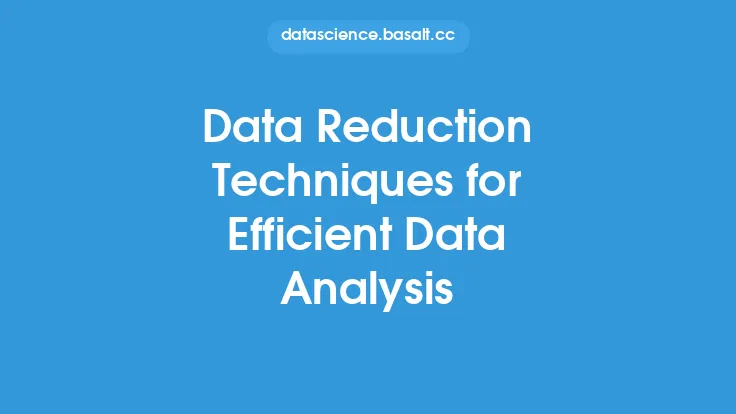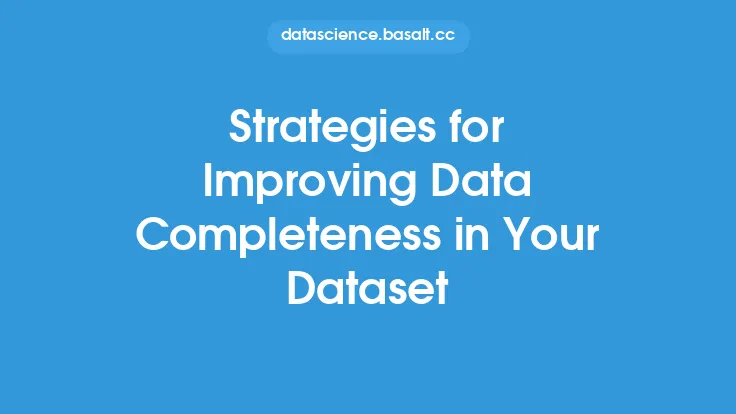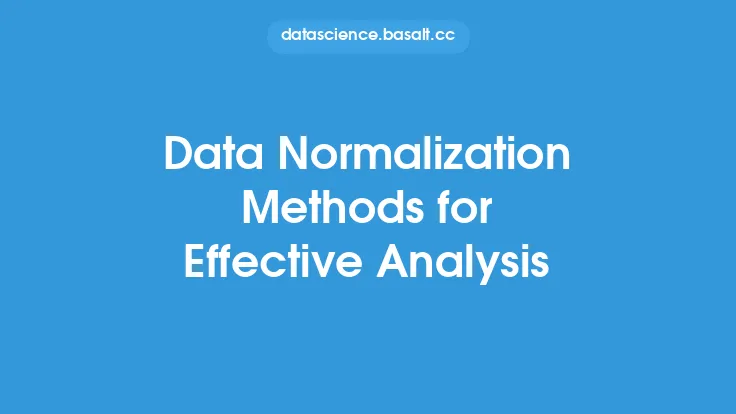Data management is a critical component of any organization's data governance strategy, as it enables the effective collection, storage, and analysis of data. With the exponential growth of data in recent years, it has become increasingly important for organizations to implement robust data management techniques to improve data analysis. In this article, we will explore the various data management techniques that can be used to improve data analysis, including data warehousing, data mining, data visualization, and data governance.
Introduction to Data Management Techniques
Data management techniques are methods used to collect, store, and analyze data. These techniques are designed to help organizations extract insights from their data, make informed decisions, and drive business success. There are several data management techniques that can be used to improve data analysis, including data warehousing, data mining, and data visualization. Data warehousing involves the creation of a centralized repository of data that can be accessed and analyzed by users across the organization. Data mining involves the use of statistical and mathematical techniques to identify patterns and relationships in data. Data visualization involves the use of graphical and visual techniques to communicate insights and trends in data.
Data Warehousing and Data Marts
Data warehousing is a data management technique that involves the creation of a centralized repository of data that can be accessed and analyzed by users across the organization. A data warehouse is a database that is designed to store data in a way that makes it easy to access and analyze. Data warehouses are typically used to store large amounts of data from various sources, such as customer relationship management systems, enterprise resource planning systems, and social media platforms. Data marts, on the other hand, are smaller databases that are designed to store a specific subset of data. Data marts are often used to support specific business functions, such as sales or marketing.
Data Mining and Predictive Analytics
Data mining is a data management technique that involves the use of statistical and mathematical techniques to identify patterns and relationships in data. Data mining is often used to predict future trends and behaviors, such as customer churn or purchase likelihood. Predictive analytics is a type of data mining that involves the use of statistical models to forecast future events or behaviors. Predictive analytics is often used in applications such as credit scoring, fraud detection, and marketing automation. There are several data mining techniques that can be used, including decision trees, clustering, and neural networks.
Data Visualization and Reporting
Data visualization is a data management technique that involves the use of graphical and visual techniques to communicate insights and trends in data. Data visualization is often used to create reports, dashboards, and scorecards that provide users with a quick and easy way to understand complex data. There are several data visualization tools that can be used, including tables, charts, and graphs. Reporting is another important aspect of data management, as it involves the creation of regular reports that provide users with insights and trends in data. Reporting can be used to support various business functions, such as sales, marketing, and finance.
Data Governance and Quality
Data governance is a data management technique that involves the creation of policies, procedures, and standards for managing data across the organization. Data governance is critical for ensuring that data is accurate, complete, and consistent across the organization. Data quality is another important aspect of data management, as it involves the creation of processes and procedures for ensuring that data is accurate, complete, and consistent. There are several data quality techniques that can be used, including data validation, data cleansing, and data normalization.
Big Data and NoSQL Databases
Big data refers to the large amounts of structured and unstructured data that are generated by organizations every day. Big data can be used to support various business functions, such as customer relationship management, supply chain management, and financial management. NoSQL databases are a type of database that is designed to store and manage large amounts of unstructured data. NoSQL databases are often used in big data applications, such as social media analytics, sentiment analysis, and recommender systems. There are several NoSQL databases that can be used, including MongoDB, Cassandra, and HBase.
Cloud Computing and Data Management
Cloud computing is a model of delivering computing services over the internet. Cloud computing can be used to support various data management functions, such as data storage, data processing, and data analysis. Cloud computing provides several benefits, including scalability, flexibility, and cost savings. There are several cloud computing platforms that can be used, including Amazon Web Services, Microsoft Azure, and Google Cloud Platform. Cloud computing can be used to support various data management techniques, including data warehousing, data mining, and data visualization.
Best Practices for Implementing Data Management Techniques
There are several best practices that can be used to implement data management techniques, including defining clear goals and objectives, establishing a data governance framework, and providing training and support to users. It is also important to ensure that data is accurate, complete, and consistent across the organization. Additionally, it is important to use data visualization and reporting techniques to communicate insights and trends in data. Finally, it is important to continuously monitor and evaluate data management techniques to ensure that they are meeting the needs of the organization.
Conclusion
In conclusion, data management techniques are critical for improving data analysis and driving business success. There are several data management techniques that can be used, including data warehousing, data mining, data visualization, and data governance. Additionally, big data and NoSQL databases can be used to support various business functions, such as customer relationship management and supply chain management. Cloud computing can be used to support various data management functions, such as data storage, data processing, and data analysis. By following best practices and using the right data management techniques, organizations can unlock the full potential of their data and drive business success.





